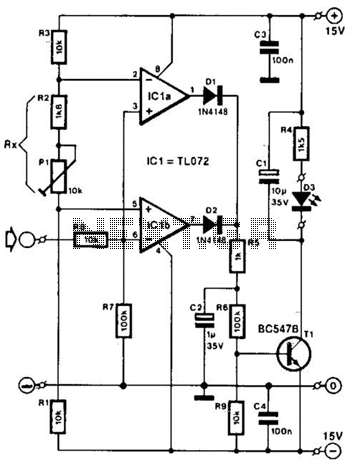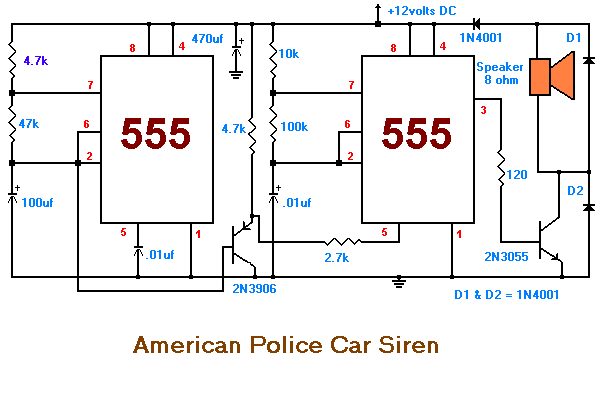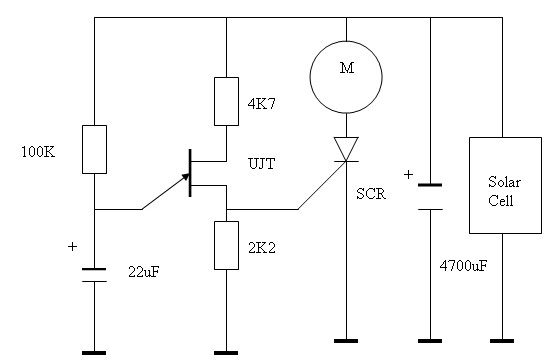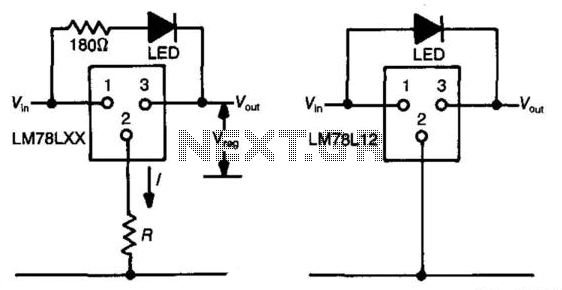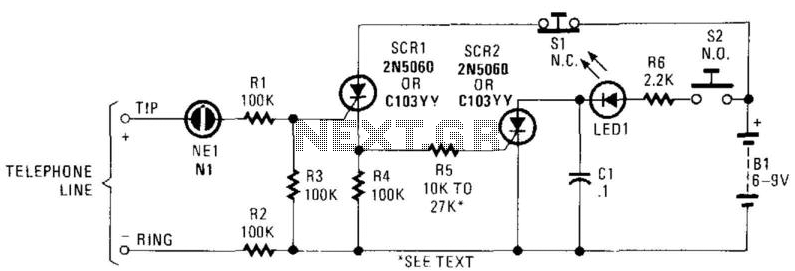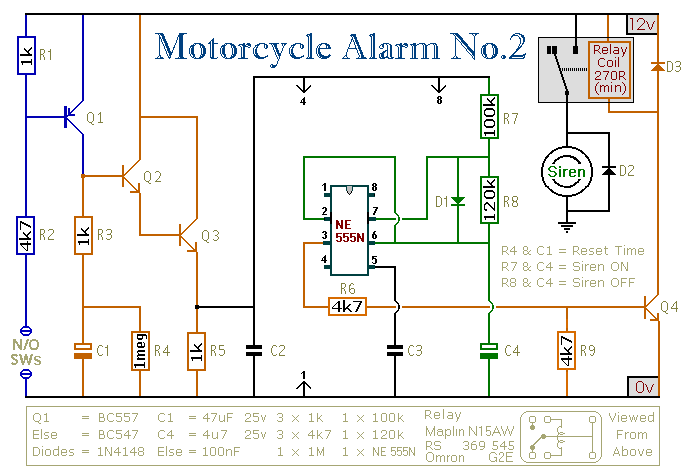
Build a Beeper visual indicator
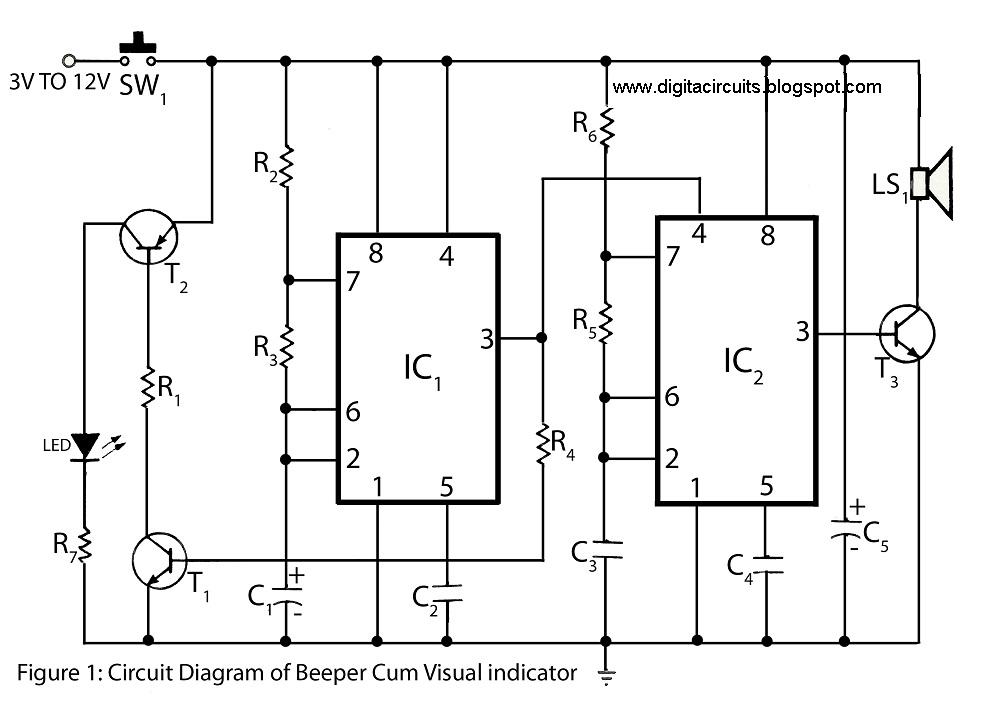
This circuit of a beeper and visual indicator is constructed using two timer integrated circuits (ICs) configured in an astable multivibrator mode. The frequency produced by IC1 is regulated by capacitor C1. The output from pin 3 of IC1 is fed into input pin 4 of IC2 and to the base of voltage amplifier transistor T1 through resistor R4. A flashing light is connected to the collector of switching transistor T2 and grounded through resistor R7.
The circuit operates as a dual-function indicator, providing both auditory and visual signals. The astable multivibrator configuration allows for continuous oscillation, generating a square wave output. Timer IC1 is responsible for generating a frequency that determines the rate of blinking for the visual indicator and the beeping sound from the beeper.
Capacitor C1 plays a crucial role in setting the oscillation frequency of IC1. By selecting the appropriate capacitance value, the timing characteristics can be adjusted to achieve the desired blinking rate for the visual indicator. The output from pin 3 of IC1, which produces the square wave signal, is routed to the input of IC2. This second timer IC can be used to further amplify the signal or to generate a different frequency if desired.
The voltage amplifier transistor T1 is employed to amplify the signal from IC1, allowing for better control over the subsequent components. Resistor R4 serves to limit the base current to T1, ensuring that it operates within safe limits. The amplified output can then be used to drive additional loads or indicators.
The flashing light is connected to the collector of switching transistor T2, which acts as a switch to control the light's operation. When T2 is activated by the output of T1, the light will flash in synchronization with the beeping sound, providing a visual cue in addition to the auditory signal. Resistor R7 ensures that the circuit is properly grounded, completing the circuit for the flashing light.
Overall, this beeper and visual indicator circuit is versatile and can be adapted for various applications, such as alarms, timers, or notification systems, where both sound and light signals are beneficial for alerting users.This entire circuit of beeper cum visual indicator is build and fabricated around two timer ICs and is configured in an astable multivibrator mode. The frequency generated by IC1 is controlled by capacitor C1. The output from pin 3 of IC1 is given to input pin 4 of IC2 and base of voltage amplifier transistor T1 through resistor R4.
Flashing light is connected to collector of switching transistor T2 and grounded through resistor R7. 🔗 External reference
The circuit operates as a dual-function indicator, providing both auditory and visual signals. The astable multivibrator configuration allows for continuous oscillation, generating a square wave output. Timer IC1 is responsible for generating a frequency that determines the rate of blinking for the visual indicator and the beeping sound from the beeper.
Capacitor C1 plays a crucial role in setting the oscillation frequency of IC1. By selecting the appropriate capacitance value, the timing characteristics can be adjusted to achieve the desired blinking rate for the visual indicator. The output from pin 3 of IC1, which produces the square wave signal, is routed to the input of IC2. This second timer IC can be used to further amplify the signal or to generate a different frequency if desired.
The voltage amplifier transistor T1 is employed to amplify the signal from IC1, allowing for better control over the subsequent components. Resistor R4 serves to limit the base current to T1, ensuring that it operates within safe limits. The amplified output can then be used to drive additional loads or indicators.
The flashing light is connected to the collector of switching transistor T2, which acts as a switch to control the light's operation. When T2 is activated by the output of T1, the light will flash in synchronization with the beeping sound, providing a visual cue in addition to the auditory signal. Resistor R7 ensures that the circuit is properly grounded, completing the circuit for the flashing light.
Overall, this beeper and visual indicator circuit is versatile and can be adapted for various applications, such as alarms, timers, or notification systems, where both sound and light signals are beneficial for alerting users.This entire circuit of beeper cum visual indicator is build and fabricated around two timer ICs and is configured in an astable multivibrator mode. The frequency generated by IC1 is controlled by capacitor C1. The output from pin 3 of IC1 is given to input pin 4 of IC2 and base of voltage amplifier transistor T1 through resistor R4.
Flashing light is connected to collector of switching transistor T2 and grounded through resistor R7. 🔗 External reference
